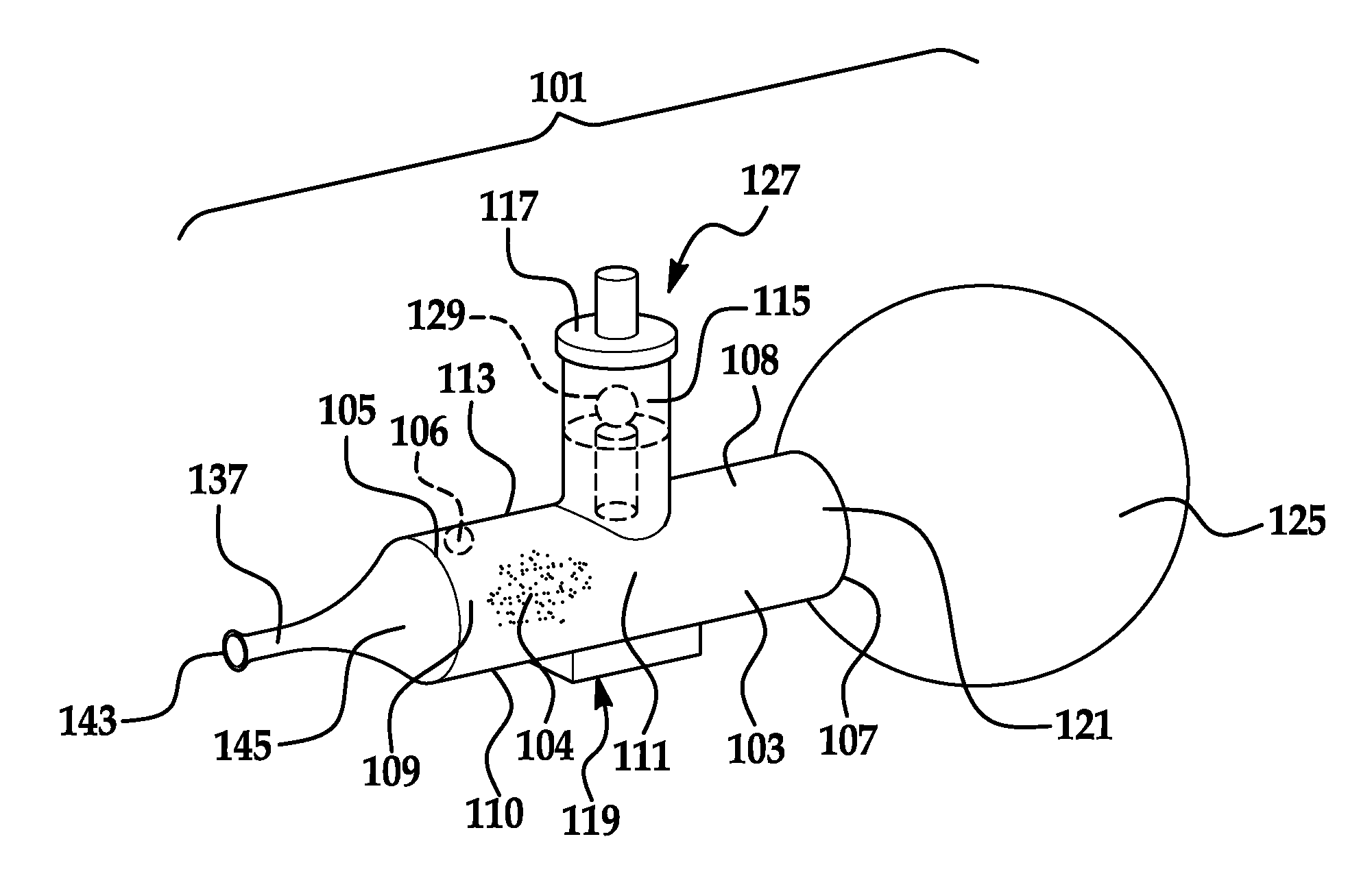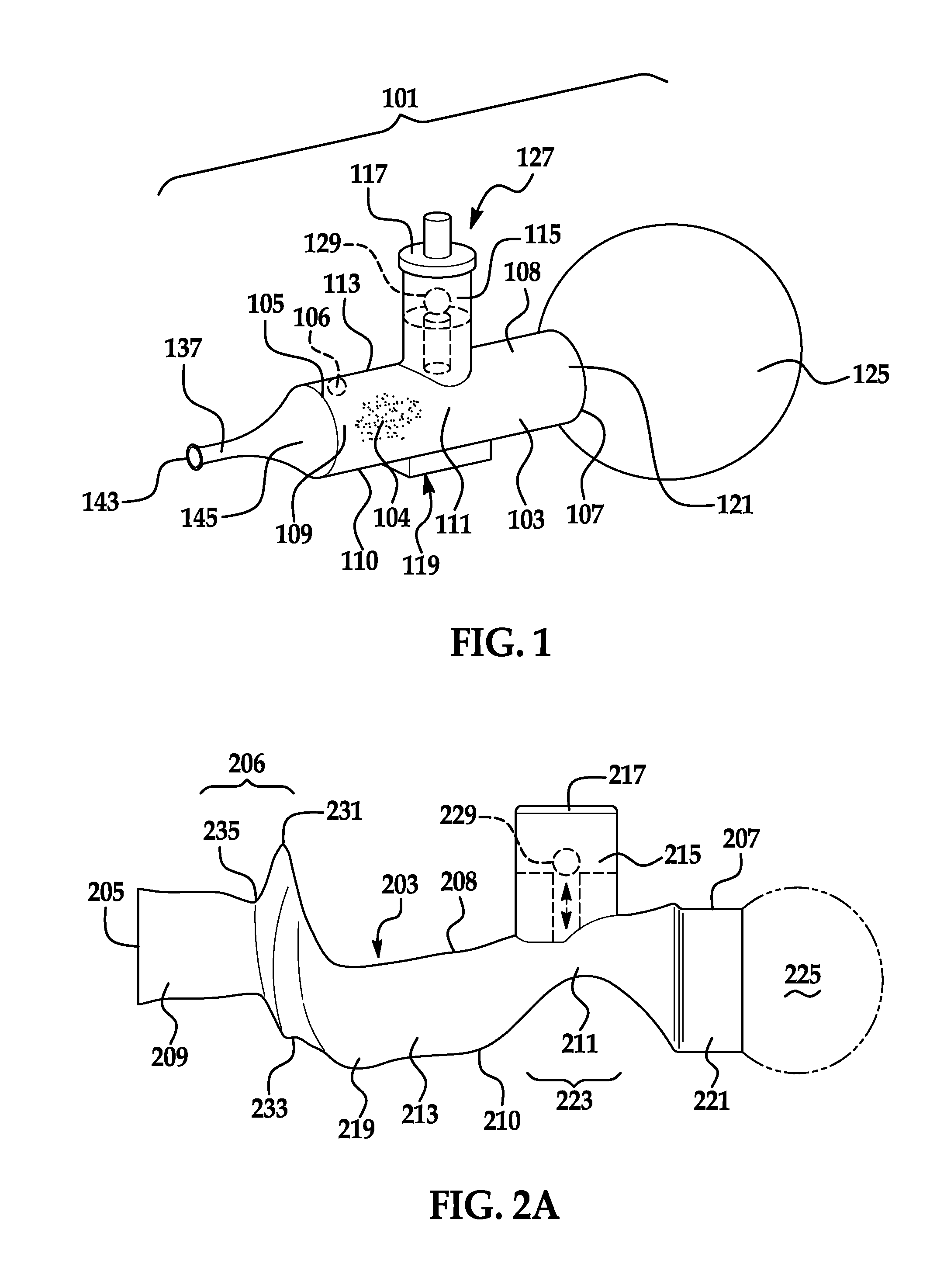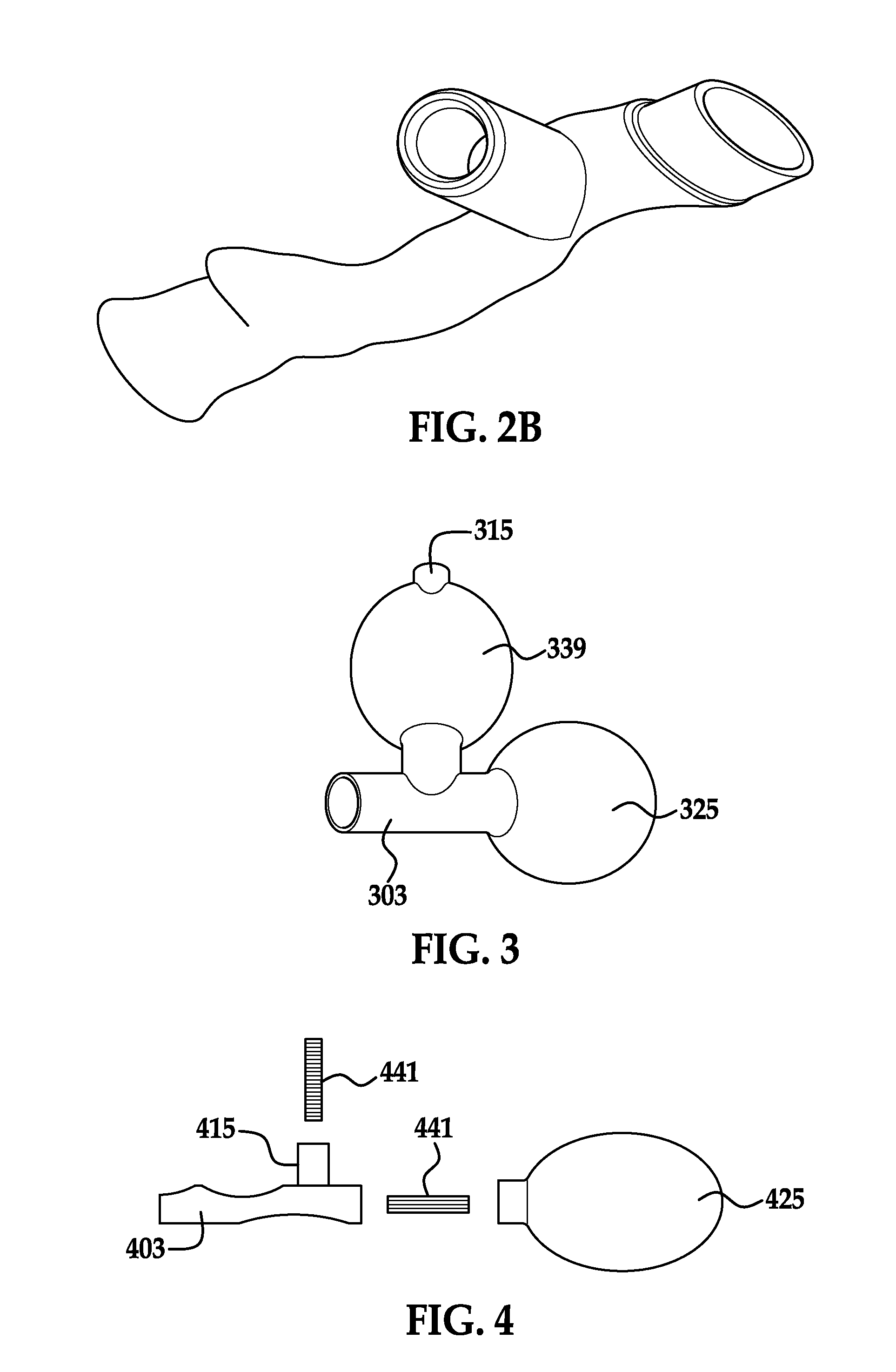Lung aerosol collection device
a technology of aerosol collection and lung, which is applied in the field of lung aerosol collection devices, can solve the problems of difficult to obtain a lung sample and confirm the etiology of pneumonia, and increasing the risk of patients, so as to achieve accurate collection, simple and inexpensive
- Summary
- Abstract
- Description
- Claims
- Application Information
AI Technical Summary
Benefits of technology
Problems solved by technology
Method used
Image
Examples
example 1
[0074]A breath separation and collection device is depicted in FIG. 5. The device includes a single piece conduit and shaft substantially as depicted in FIG. 2. A ball-check valve is present in the shaft. A filter is connected to the shaft and housed in a filter cartridge. A flexible chamber is attached to the second end of the conduit.
[0075]Human subjects (patients) are sampled as approved by Georgia Institute of Technology Institution Review Board as IRB Protocol H08353. Patients are asked to expel a deep cough into the device and continue exhaling residual air in the lungs. Coughing and sneezing aerosolize a greater number of lower lung pathogens as compared to exhalation alone.
example 2
[0076]Oxygen Separation Test: Oxygen absorption by blood occurs only in the lower airway (alveoli), and not in the upper airway (mouth, trachea). Thus the oxygen level in the lower airway is expected to be less than that of the upper airway. Ambient atmosphere contains approximately 21% oxygen, while expired air is about 16.5% oxygen. The oxygen content from the upper airway chamber is tested and compared with a sample from a collection chamber located on a shaft. The percentage of oxygen in each sample is measured with an oxygen meter (Teledyne Analytical Instruments, Model # GB 300). The experiment is repeated using the device of Example 1 ten times with statistical significance defined at the p<0.05 level.
[0077]As depicted in FIG. 6, the average percentage of oxygen in lower airway sample as passed through the filter is 15.9%, whereas the average upper airway sample is 18.4%. The average percentage of the room air oxygen as breathed by the patients is 20.9%. The lower airway samp...
example 3
[0079]Detection of blood ethanol in lower-respiratory air. Ingested ethanol appears 20 minutes later in the blood stream and becomes volatile in the alveolar space, not in the upper airway. Two 0.02% breath alcohol testers (Advanced Safety Devices) are connected to the inventive device. One detector samples lower airway air and is connected to the shaft. The second detector is positioned within the chamber. Participants drink 50 proof alcohol, 60 ml for females and 80 ml for males. Participants then rinse the mouth with water but are not allowed to swallow the water. After 20 minutes, the participant drinks an 8 oz glass of water and then deep coughs and exhales residual air into the inventive device as described in Example 1. The color changing crystals are allowed to develop for 2 minutes. The paired breath alcohol testers are photographed and resulting color analyzed with photo editing software and the quantitative saturation and blue levels are measured.
[0080]As a control, the v...
PUM
 Login to View More
Login to View More Abstract
Description
Claims
Application Information
 Login to View More
Login to View More - R&D
- Intellectual Property
- Life Sciences
- Materials
- Tech Scout
- Unparalleled Data Quality
- Higher Quality Content
- 60% Fewer Hallucinations
Browse by: Latest US Patents, China's latest patents, Technical Efficacy Thesaurus, Application Domain, Technology Topic, Popular Technical Reports.
© 2025 PatSnap. All rights reserved.Legal|Privacy policy|Modern Slavery Act Transparency Statement|Sitemap|About US| Contact US: help@patsnap.com



